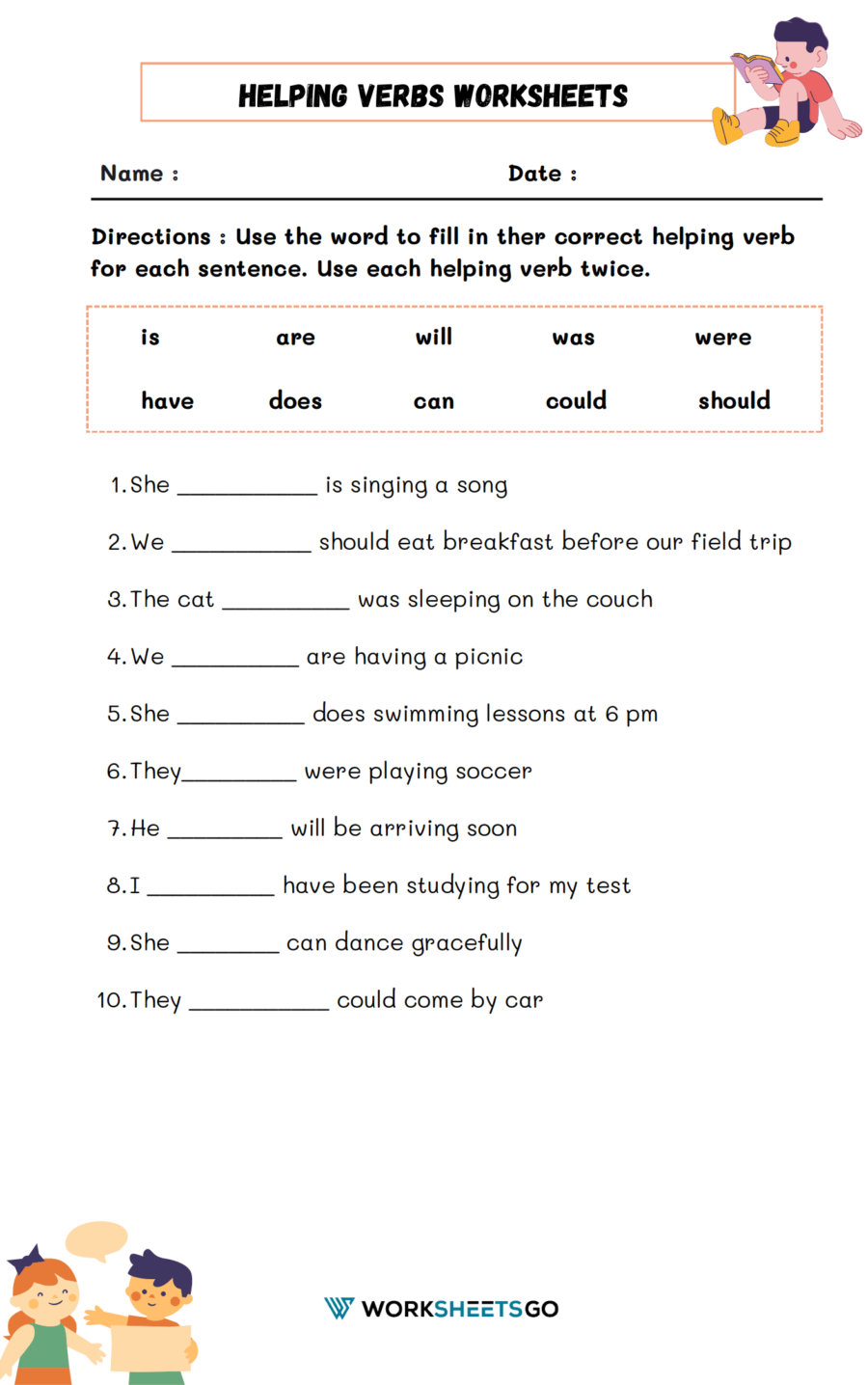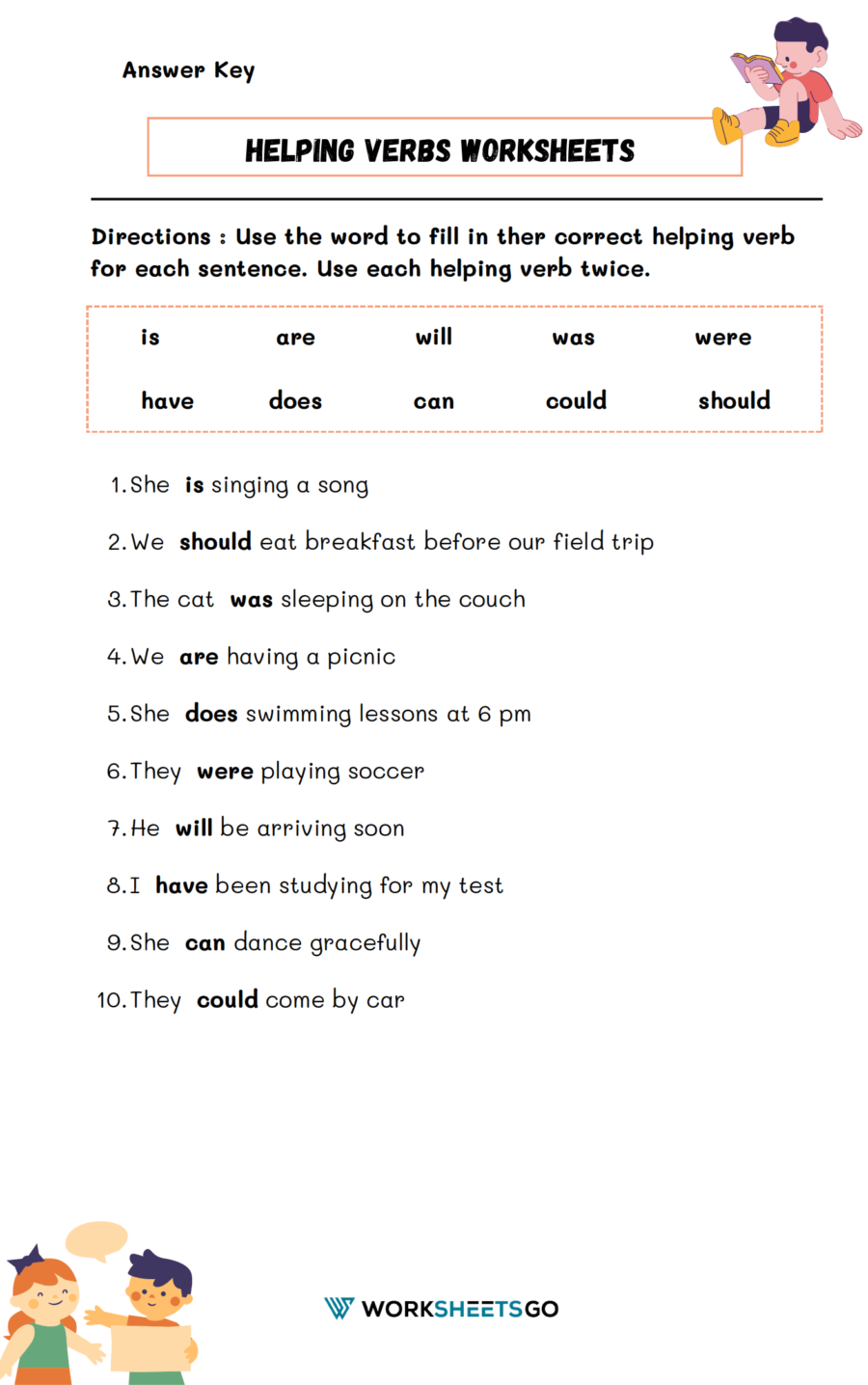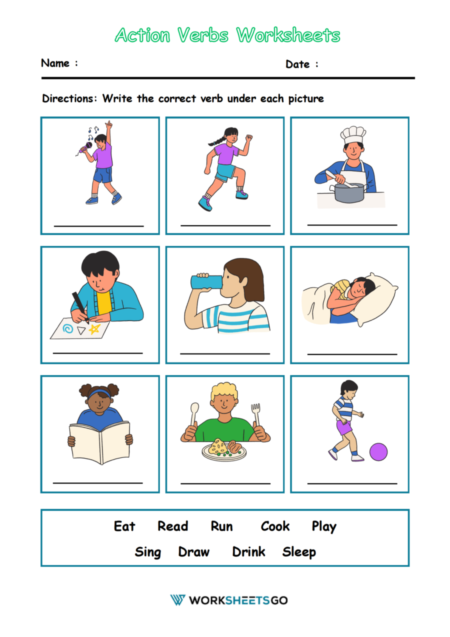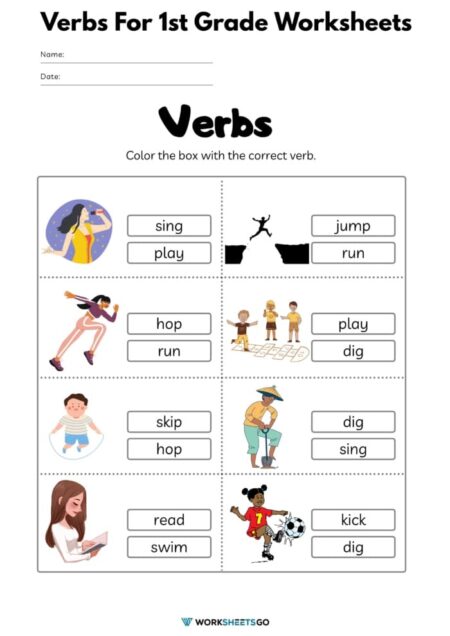Helping verbs, also known as auxiliary verbs, are essential building blocks in the construction of sentences. They are used to form different tenses, moods, and voices of other verbs. Understanding and using helping verbs correctly is crucial for students as they advance in their grasp of English grammar. Today, we’re sharing a set of worksheets designed to strengthen students’ skills in identifying and using helping verbs.
What Are Helping Verbs?
Helping verbs are verbs that come before the main verb in a sentence to give it more meaning. They can indicate possibility, necessity, or time. Some common helping verbs include ‘is,’ ‘are,’ ‘will,’ ‘was,’ ‘were,’ ‘have,’ ‘does,’ ‘can,’ ‘could,’ and ‘should.’
The Worksheet: A Closer Look
The helping verbs worksheet we’re discussing today is a well-structured practice tool for students. It features a list of sentences with blank spaces where students must fill in the correct helping verb. The directions are clear: use each helping verb twice, ensuring the right tense and agreement with the subject.
Here’s a glimpse of what the worksheet entails:
- She ______ is singing a song.
- We ______ should eat breakfast before our field trip.
- The cat ______ was sleeping on the couch.
- We ______ are having a picnic.
- She ______ does swimming lessons at 6 pm.
- They ______ were playing soccer.
- He ______ will be arriving soon.
- I ______ have been studying for my test.
- She ______ can dance gracefully.
- They ______ could come by car.
Each sentence is designed to reinforce the concept of helping verbs and ensure that students understand how they function within different contexts.

Answer Key

Benefits of the Helping Verbs Worksheet
Using worksheets like the one showcased can have several benefits for students:
- Reinforcement of Grammar Rules: Regular practice allows students to internalize the rules of grammar.
- Contextual Understanding: Filling in blanks within sentences helps students understand how helping verbs fit into everyday communication.
- Preparation for Advanced Concepts: A solid grasp of helping verbs prepares students for more complex grammatical structures.
- Self-assessment: Students can immediately see where their understanding may be lacking, allowing for targeted learning.
How to Use These Worksheets
Teachers and parents can incorporate these worksheets into their lesson plans or home study routines in various ways:
- Daily Warm-Ups: Start the day with a grammar exercise to get students thinking about sentence structure.
- Homework Assignments: Assign worksheets for additional practice at home.
- Group Activities: Turn grammar practice into a game where students compete to fill in the blanks correctly.
- Review Sessions: Use the worksheets as a review before tests or quizzes on verbs and grammar.
Helping verbs are a fundamental aspect of English grammar, and mastery of them is crucial for effective communication. Worksheets like the one we’ve discussed are an excellent resource for students to practice and perfect their use of helping verbs. By integrating these worksheets into their study habits, students will be well on their way to becoming proficient in English grammar and ready to tackle even more complex linguistic challenges.



